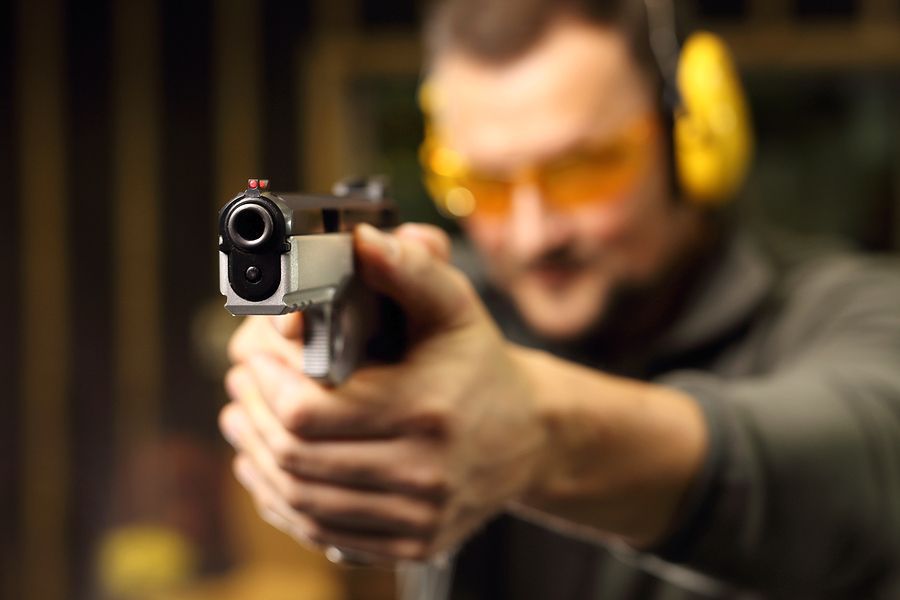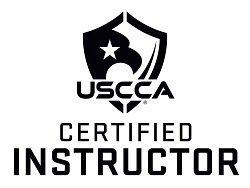Gregory Kielma • August 5, 2024
Courts Attack Second Amendment, Right to Buy Firearms

Courts Attack Second Amendment, Right to Buy Firearms
By
Larry Keane
There’s an interesting – if not devious – trend emerging in some Second Amendment cases. The first step of the U.S. Supreme Court’s Bruentest is to ask whether the conduct at issue is covered by the text of the Second Amendment which protects a pre-existing “right to keep and bear arms.” Some lower courts in purporting to apply the Bruen test are upholding gun control laws by holding that you do not have a Second Amendment right to buy a firearm.
That’s intellectually dishonest, to say the least. The ability to freely approach the gun counter to legally purchase a firearm is paramount to exercising the Second Amendment rights to keep and bear arms. There is no “keeping” of firearms if there is no legal right to lawfully acquire those same firearms. The ramifications of this flawed legal reasoning are self-evident. The government could simply ban the buying (and selling) of firearms and therefore eviscerate the Second Amendment all without infringing upon the right.
Right to Buy
The most recent example comes from New Mexico, where a federal district court judge refused to preliminarily enjoin the state’s seven-day waiting period for purchasing a firearm. There were several serious concerns with this decision, including the judge’s determination that the lengthy waiting period doesn’t constrain the rights to keep and bear arms. The judge contended that the waiting period only minimally burdens the “ancillary right to acquire firearms.”
That might come as news to an individual facing imminent threat to their safety or even their life. A woman who is the victim of domestic violence who considers purchasing a firearm to protect herself and her family could argue that the state’s seven-day waiting period is a seven-day ban on her ability to lawfully keep and bear arms when she knows there’s a threat to her life.
That wasn’t the worst of it. The same judge concluded that the waiting-period law is presumptively constitutional” given that the first waiting period laws were enacted in the 1920s – long after U.S. Constitution was ratified, and the 14th Amendment adopted. The judge even pointed to past, discriminatory laws that restricted the sale of firearms to slaves, freedmen and Native Americans. It is astonishing that a federal judge relied on racist laws that have been repudiated by the courts and American society to justify a gun control law.
However, that’s not what the Supreme Court held in the Bruen decision. That test, the Court said, is that gun control laws must have a “history and tradition” consistent with when the Second Amendment was signed into law in 1791 at the nation’s founding.
Court Concerns
It would be tempting to dismiss this judge’s decision as a “one-off” aberration. Unfortunately, that’s not the case. A 2024 decision by the U.S. District Court for the Southern District of New York explicitly said that there is no Second Amendment right to purchase a second handgun within a 90-day window of purchasing a previous handgun.
“The question thus becomes whether a waiting period before the purchase of a second handgun is conduct covered by the text of the Second Amendment. It is not,” the court ruled in its opinion of Knight v. City of New York.
What the court is saying is that the government can ration the exercise of a Constitutionally protected right, in this case, to just once every 90 days. This would be unthinkable if a court ruled that a law-abiding American could only exercise their rights to free speech or attend a church, mosque of synagogue of their choosing every three months. The federal court here is relegating the Second Amendment to a second-class right, that Justice Clarence Thomas has warned about.
That line of thinking wasn’t limited to New York. The U.S. District Court for the District of Vermont upheld the state’s waiting-period law, in Vermont Federation of Sportsmen’s Clubs v. Birmingham this year, by claiming there’s no Second Amendment right to legally purchasing a firearm.
“The Court finds that the relevant conduct – acquiring a firearm through a commercial transaction on-demand – is not covered by the plain text of the Second Amendment,” wrote Judge William Sessions III. He quizzically added, “Plaintiffs may keep and bear arms without immediately acquiring them.”
That defies logic. It is impossible to legally keep and bear anything without the ability to lawfully purchase it first.
In 2023, the U.S. District Court for the District of Colorado ruled against Rocky Mountain Gun Owners seeking to enjoin a three-day-waiting period law signed by Gov. Jared Polis. In this decision, the federal court ruled that the Second Amendment doesn’t explicitly say anything about legally acquiring a firearm.
“From this reading of the plain text, it is clear the relevant conduct impacted by the waiting period – the receipt of a paid-for firearm without delay – is not covered,” the decision reads, adding, “To ‘keep,’ under the definitions provided in Heller, meant to retain an object one already possessed. It did not mean to receive a newly paid-for item, and it certainly did not mean to receive that item without delay. Likewise, ‘having weapons’ indicates the weapons are already in one’s possession, not that one is receiving them.”
The U.S. District Court for the Eastern District of Pennsylvania ruled in 2023 in U.S. v. King that there is no right to buy and sell firearms. In fact, Judge Joseph Leeson Jr. clearly states that it is a factor he didn’t – and wouldn’t – consider, writing, “…the Court looks at the Second Amendment’s plain text; it does not consider ‘implicit’ rights that may be lurking beneath the surface of the plain text.”
“Even if the Court assumed that there is an implicit right in the Second Amendment to buy and sell firearms in order to keep and bear arms, that is not the same thing as a right to buy and sell firearms as a regular course of trade or business with the principal objective of livelihood and profit through the repetitive purchase and resale of firearms,” Judge Leeson wrote. “In other words, the Second Amendment does not protect the commercial dealing of firearms.” Of course, while Heller said commercial regulations could be presumptively valid, it never suggested that the buying and selling of commonly used “arms” could be banned.
Governors Knew in 2020
Juxtapose that with governors who, just four years ago, quickly reversed their policies to order firearm retailers to close their doors during the 2020 COVID-19 pandemic. New Jersey’s Gov. Phil Murphy reversed course from his initial ordering of gun stores to be closed. He recognized that denying the ability of law-abiding citizens to legally obtain a firearm is denying them the ability to exercise their Second Amendment rights. Pennsylvania’s former Gov. Tom Wolf did the same, even after Pennsylvania’s Supreme Court denied a challenge to the order. The quiet about-face was in light of what could have become a U.S. Supreme Court challenge.
A federal judge ordered former Massachusetts Gov. Charlie Baker to allow firearm retailers there to reopen. The judge ordering the injunction wrote, “The exigencies surrounding this viral pandemic both justify and necessitate changes in the manner in which people live their lives and conduct their daily business. However, this emergency – like any other emergency – has its constitutional limits. It would not justify a prior restraint on speech, nor a suspension of the right to vote. Just the same, it does not justify a ban on obtaining guns and ammunition.”
Divorcing the right to freely approach the gun counter at a firearm retailer and the right to keep and bear arms is a dangerous slope. Firearms are legal products, available for anyone to freely purchase who is over the age of 18 for long guns or 21 for handguns, provided that individual is purchasing the firearm for him or herself and can pass the FBI’s National Instant Criminal Background Check System (NICS). Conditioning that right – whether through waiting periods which are an attempt to delay the exercise of that right – or by unmooring the right to legally purchase a firearm is a violation of the rights that belong to the people.
Imagine a court ruling that the First Amendment doesn’t include the right to buy a book. Or a law that said you can only buy a newspaper after waiting seven days. Or a law that limits how many books you can buy in a month. Or a law in which the government decides which books you are allowed to buy and read? Obviously, no one would tolerate such laws. So why is it acceptable for Second Amendment rights? The answer, sadly, is that despite the Heller, McDonald and Bruen decisions, because some legislative bodies and judges treat the Second Amendment as a “second class right.”
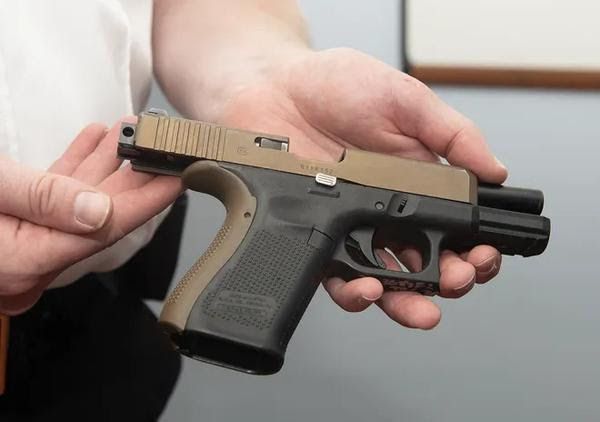
Glock Switch and FRT’s: What’s The Difference? Gregg Kielma 01/09/2026 Will FRTs Go the Same Way as Glock Switches? Kielma’s say’s; Short answer: No — at least not right now. Legally, FRTs and Glock switches are in very different places at the Federal Level. Here’s the Breakdown Kielma say’s “Let’s Take A LOOK” 1. Federal Status: FRTs vs. Glock Switches Glock Switch (Auto Sear) • Always classified as a machine gun under federal law. • Possession = felony, even if not installed. • No court rulings have changed that. Forced Reset Triggers (FRTs) • As of the May 2025 DOJ settlement, FRTs are NOT classified as machine guns under federal law because each shot still requires a separate trigger pull. • Federal courts agreed that FRTs do not meet the NFA machine gun definition. • ATF has even begun returning seized FRTs to owners. So federally, FRTs are not in the same category as Glock switches. 2. State-Level Reality This is where things get messy. Even though FRTs are federally legal: • Several states still ban them outright (CA, CT, HI, MD, NJ, etc.). • Sixteen states are actively challenging the federal settlement in court. So while Glock switches are universally illegal, FRTs are in a patchwork legal environment. 3. Could FRTs Be Reclassified Later? It’s possible — but not guaranteed. Factors: • Ongoing appeals in the Fifth Circuit. • Potential Supreme Court involvement. • Political pressure from states arguing FRTs increase rate of fire. But right now, the legal trend is moving in the opposite direction of Glock switches — toward less federal restriction, not more. Kielma’s Parting Shot: FRTs are not on the same legal trajectory as Glock switches. Glock switches = always illegal machine guns. FRTs = currently federally legal, but with state bans and ongoing litigation.

Forced Reset Triggers (FRTs): What Responsible Gun Owners Should Know in 2026 Gregg Kielma By Tactical K Training & Firearms – Parrish, Florida The conversation around Forced Reset Triggers (FRTs) has grown louder over the past few years, and many gun owners are still unsure where these devices stand today. At Tactical K Training and Firearms , our mission is to help Florida gun owners stay informed, stay safe, and stay on the right side of the law. This post breaks down what FRTs are, how they function, and what their current legal status means for responsible firearm owners. What Exactly Is an FRT? A Forced Reset Trigger is an aftermarket trigger system—mostly used in AR 15 pattern rifles—that mechanically forces the trigger forward after each shot. Unlike a standard semi automatic trigger, which resets only when the shooter releases it, an FRT uses the firearm’s cycling energy to push the trigger forward more aggressively. The important part: The shooter must still pull the trigger for every shot. The design simply allows for faster follow up shots due to the rapid mechanical reset. Why FRTs Became a Legal Battleground FRTs entered the national spotlight when federal agencies argued that certain models functioned like machineguns. Their position was that maintaining pressure on the trigger could allow multiple shots during a “single continuous pull.” However, federal courts later ruled that because the trigger physically resets between shots—and because the shooter must apply pressure each time—FRTs do not meet the statutory definition of a machinegun. This led to major legal reversals, including the end of federal enforcement actions against manufacturers. That said, the legal landscape is still evolving, and responsible gun owners should stay alert to changes. Federal vs. State Law: Know the Difference As of 2026: • Federal law does not classify FRTs as machineguns. • Some states still ban or heavily restrict FRTs, often under “rapid-fire trigger activator” laws. • Florida does not currently ban FRTs, but owners should remain aware of ongoing national litigation and potential legislative changes. If you travel with firearms, especially across state lines, it’s essential to understand the laws of the states you’re entering. Federal legality does not override state-level restrictions. Why This Matters for Florida Gun Owners At Tactical K Training and Firearms , we emphasize three pillars: Avoid. Escape. Defend. Owning specialized equipment—whether it’s an FRT, a red-dot optic, or a defensive handgun—comes with the responsibility to understand both the mechanics and the law. For FRT owners, that means: • Keeping documentation and proof of purchase • Staying updated on legal developments • Using the equipment safely and responsibly • Never relying on internet rumors for legal guidance Our goal is to help you make informed decisions that protect your rights and your future. Safety First: The Tactical K Training and Firearms Approach Regardless of trigger type, the fundamentals never change: • Know your target and what’s beyond it • Keep your finger off the trigger until ready to fire • Understand your equipment before using it • Train regularly with qualified instructors A faster trigger does not replace skill, judgment, or safe handling. It’s simply a tool—and tools are only as safe as the person using them. Kielma's Parting Shot; Tactical K Training and Firearms Final Thoughts Forced Reset Triggers are a perfect example of how quickly the legal and technical landscape can shift. While federal courts have clarified their position, the conversation is far from over. As always, Tactical K Training and Firearms will continue to provide clear, responsible, and up to date information to help Florida gun owners stay educated and empowered.

What Ammo Shooters Must Bring in 2026 Gregg Kielma 01/09/2026 1. Factory New, Brass Cased Ammunition Most ranges now require: • Brass cases only • No steel case • No steel core • No bi metal jackets Expect more magnet checks at the firing line. If a round sticks to a magnet, it’s likely not allowed. 2. Ammunition Within Posted Velocity Limits Ranges are increasingly enforcing: • No “hot” loads • No +P+ in certain calibers • No magnum rifle rounds unless the range is rated for them This protects berm integrity and reduces noise impact on surrounding communities. 3. No Tracer, Incendiary, or Armor Piercing Rounds Outdoor ranges — even those historically more flexible — are now banning: • Tracers • Incendiary rounds • Armor piercing projectiles These rounds pose fire risks and can penetrate berms beyond safe limits. 4. Original Packaging Required Shooters should bring: • Factory boxes • Visible labeling • Lot numbers This allows RSOs to verify ammo type quickly and prevents unsafe reloads from being passed off as factory rounds. 5. Reloads Only If Approved Some ranges still allow reloads, but with strict conditions: • They must be your own • They must be brass and non magnetic • They must meet posted velocity limits Many facilities, however, are moving to factory only policies for liability reasons. What This Means for Outdoor Ranges Outdoor ranges traditionally allowed: • Steel case • Bi metal • Higher velocity rifle rounds But in 2026, many are adopting rules similar to indoor facilities. Expect: • Brass only • Non magnetic bullets • No tracers • Velocity caps • Factory new only This shift ensures safer training environments and reduces the risk of fires, ricochets, and berm damage. How Tactical K Training and Firearms Helps You Stay Compliant At Tactical K Training, we stay ahead of regulatory and industry changes so our students don’t have to guess. Whether you’re attending a concealed carry class, a defensive pistol course, or a private training session, we’ll always provide clear guidance on: • Approved ammunition • Range specific requirements • Equipment checks • Safety protocols Kielma’s Parting Shot Our goal is simple: empower responsible gun owners with the knowledge and skills to train safely and confidently.

Ghost Guns: What Are They, and Are They Legal? Gregg Kielma 01/08/2026 My thoughts. I will not look at or deal with a firearm that do not have a serial number. I suggest to these clients you need to call the ATF for guidance. I do not and will not work with clients with GHOST Guns. The process is difficult. My policy. If it offends someone so, be it. Let’s Take a LOOK Privately made firearms—often called ghost guns—are weapons assembled by individuals from unfinished parts, kits, or 3D printed components. Traditionally, these firearms did not carry serial numbers and could be built without a background check, making it difficult for law enforcement to trace. This lack of traceability is what earned them the nickname “ghost guns.” In recent years, the federal government has taken significant steps to regulate these firearms. According to multiple legal analyses and Supreme Court updates, ghost guns are now treated much more like commercially manufactured firearms under federal law. The Supreme Court upheld an ATF rule requiring that key components—such as frames and receivers sold in kit form—must have serial numbers and can only be sold by licensed dealers who conduct background checks. This means that while it is still legal for individuals to build their own firearms for personal use, the parts and kits used to make them are now regulated. Purchasing a kit that can be “readily converted” into a functional firearm generally requires the same legal steps as buying a complete gun. In short: • Building your own firearm is still legal under federal law, as long as you are not prohibited from owning a firearm. • Ghost gun kits and unfinished receivers are now regulated, requiring serialization, licensed sales, and background checks. • State laws vary, and some states impose additional restrictions. Kielma's Parting Shot: For responsible gun owners, the key is to stay informed. As regulations evolve, understanding the legal landscape ensures you remain compliant while exercising your rights safely and responsibly. Gregg Kielma
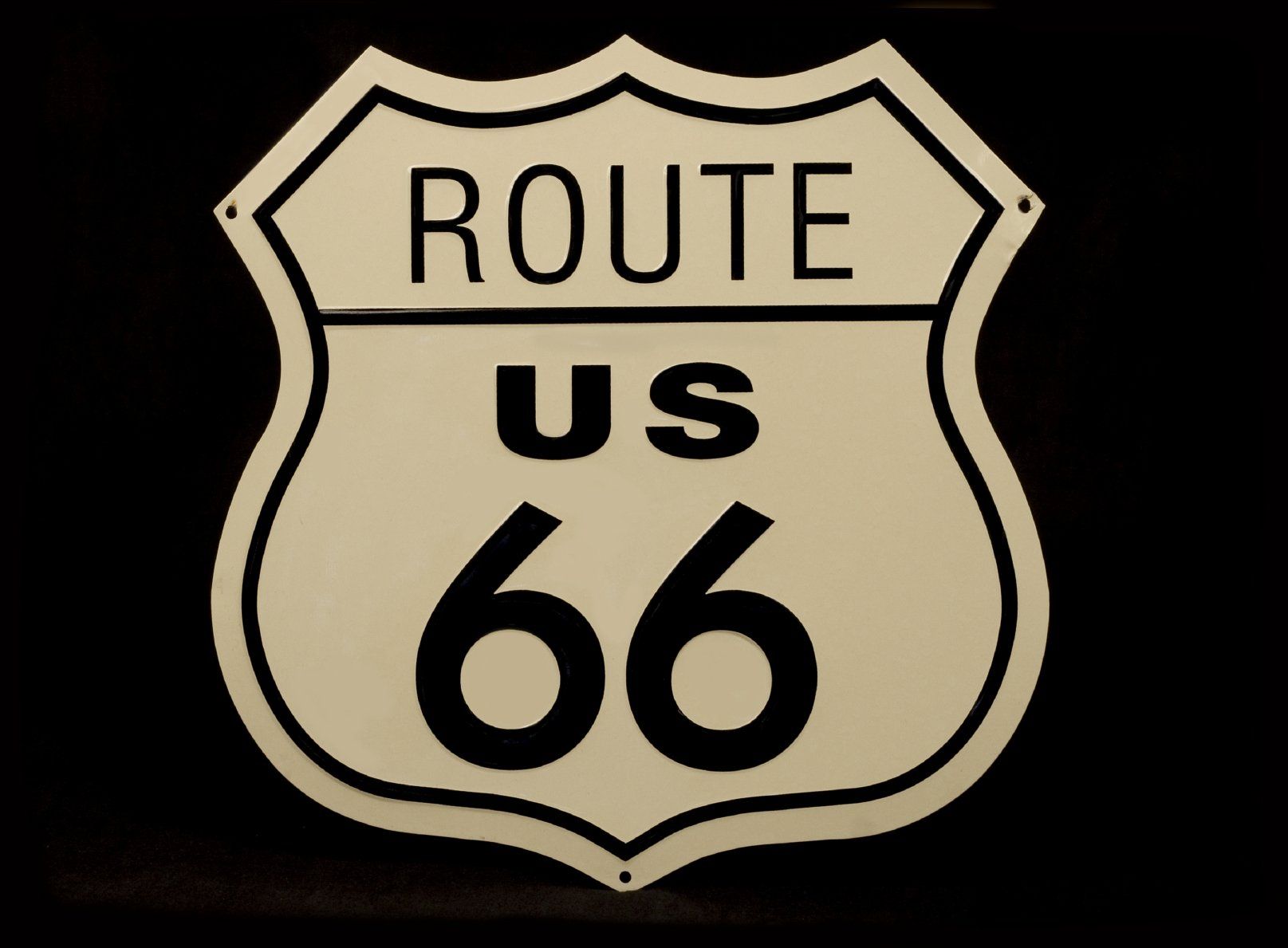
What Legal Gun Owners Should Do When Crossing State Lines and Moving to Another State Gregg Kielma 01/08/2026 I talk about this in my classes. Know the laws and states you are traveling through and make good decisions. It's your duty to understand the laws before you travel. My thoughts and suggestions. Let's Take a LOOK Traveling with a firearm is completely legal for responsible gun owners — but the moment you cross a state line, the rules change. Every state has its own laws on possession, carry, transport, and reciprocity, and misunderstanding those laws can turn an ordinary road trip into a legal nightmare. A little preparation goes a long way toward staying safe and compliant. 1. Know the Federal “Safe Passage” R ule Federal law under the Firearm Owners Protection Act (FOPA) provides a safe passage provision for travelers. As long as the firearm is unloaded, locked away, and not readily accessible, you may legally pass through states where your firearm might otherwise be prohibited. This protection only applies to transport, not carry, and only when you are traveling from one lawful location to another. 2. Research Every State on Your Route State laws vary widely — from permitless carry to strict permit requirements. Some states honor your carry permit, while others do not. Guides that break down state-by-state rules emphasize that laws change frequently, so checking updated information before each trip is essential. 3. Follow Proper Transport Procedures When traveling through states where you cannot legally carry: • Unload the firearm • Store it in a locked case • Keep ammunition separate • Place both in an area not accessible to the driver (trunk or rear compartment) These steps align with federal transport requirements and help ensure compliance across jurisdictions. 4. Understand Reciprocity — Don’t Assume Even if your home state allows permitless carry, that does not mean other states do. Reciprocity agreements determine where your permit is valid, and these agreements change over time. Updated concealed carry guides stress the importance of verifying reciprocity before traveling. 5. Avoid Unnecessary Stops in Restrictive States FOPA protects you during continuous travel, but extended stops — such as overnight stays, sightseeing, or detours — may remove that protection. When in doubt, plan your route to minimize time spent in states with restrictive laws. 6. Document Everything Keep: • Your carry permit • Firearm documentation • Proof of destination (hotel reservation, training class, hunting license, etc.) This helps demonstrate lawful purpose if questioned. 7. When Moving to a New State, Learn the New Rules If you’re relocating, not just traveling, additional requirements may apply. Some states require registration, waiting periods, or specific transport rules for new residents. Kielma’s Parting Shot Crossing state lines with a firearm is absolutely manageable for responsible gun owners — it just requires preparation. Know the laws, secure your firearm properly, and verify reciprocity before you go. Responsible travel protects your rights, your safety, and your peace of mind.
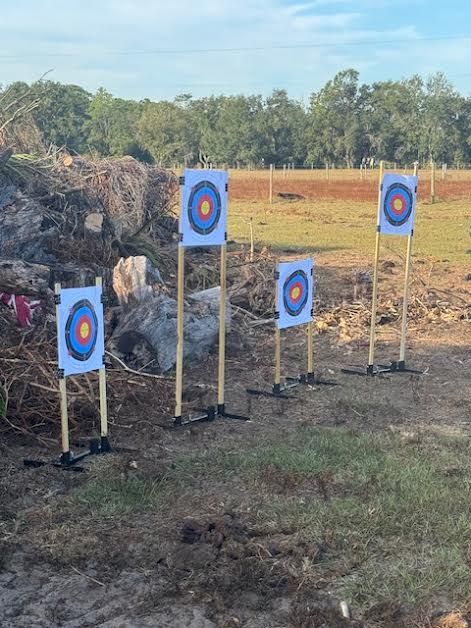
Outdoor Range Ammunition in Florida: What’s Allowed? By Gregg Kielma A Tactical K Training & Firearms Ammo Brief Range Owner Gregg Kielma announces that starting April 1st, all ammo will be checked for range compliance before shooting. If your ammo is non-compliant, compliant ammo can be purchased from Tactical K Training and Firearms. Please review the new ammo guidelines below and call with any questions. No exceptions will be made after April 1st. For Florida gun owners, knowing which types of ammunition are legal — and which are prohibited — is essential before stepping onto any outdoor shooting range. While Florida has strong statewide preemption that prevents counties and cities from creating their own ammo rules, the state does enforce several important restrictions that every shooter should understand. Florida’s Statewide Ammunition Rules Florida law allows most common ammunition used for training, recreation, and defensive practice. Standard FMJ, JHP, soft point, frangible, and target loads are all legal for use at outdoor ranges. However, the state does prohibit several specific types of ammunition due to safety and fire risk concerns: Prohibited Ammunition in Florida Florida law bans the manufacture, sale, delivery, or possession of the following specialty rounds: • Armor piercing handgun ammunition • Exploding bullets • Dragon’s Breath shotgun shells • Bolo shells • Flechette shells Possessing armor piercing or exploding ammunition in a handgun — or possessing Dragon’s Breath, bolo, or flechette shells in any firearm — is illegal in Florida. These rounds are not permitted at any outdoor range, public or private. What Outdoor Ranges Commonly Allow Most outdoor ranges in Florida, including private training facilities like Tactical K Training, allow: • Standard pistol and rifle ammunition • Hollow points and defensive ammunition • Frangible rounds (often preferred for steel targets) • Shotgun birdshot and buckshot (range dependent) • Slugs (range dependent) Because Florida preempts local governments from regulating ammunition, the only additional restrictions you’ll encounter typically come from the range itself — based on safety, backstop design, or fire risk management. Fire Safety Considerations Outdoor ranges may restrict: • Steel core or bi metal ammo (sparks on steel targets) • Tracer rounds (fire hazard) • Incendiary rounds (fire hazard) While not banned by Florida statute, these rounds can create wildfire risks, especially during dry seasons. Many private ranges prohibit them for that reason. Kielma’s Parting Shot: Bottom Line for Florida Shooters If you’re using standard ammunition — FMJ, JHP, soft point, frangible, or typical shotgun loads — you’re well within Florida law. Just avoid the prohibited specialty rounds listed above and follow any additional safety rules set by my range orthe range you’re visiting.
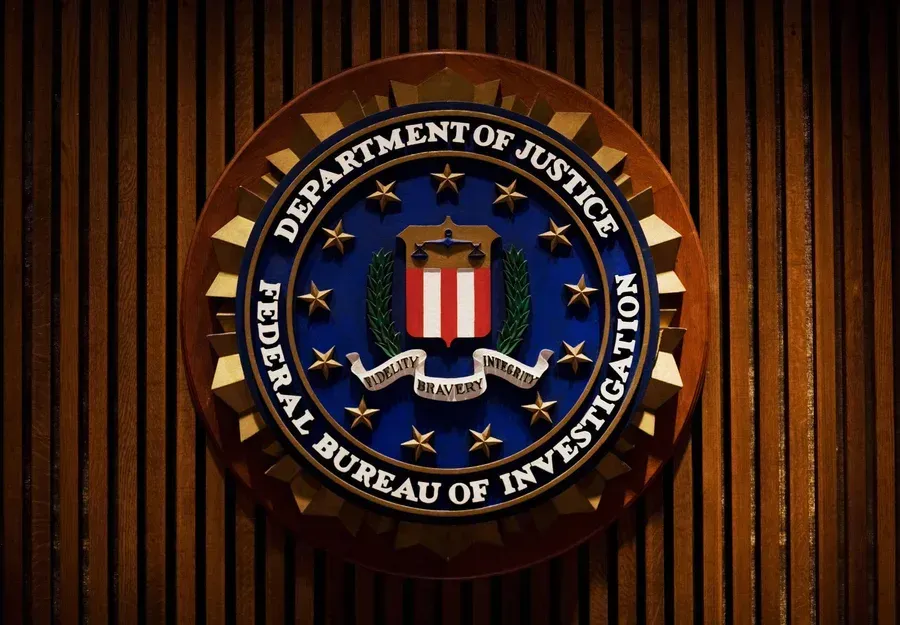
FBI Disrupts Alleged New Year’s Eve Attack, Man Charged with Attempting to Provide Material Support to ISIS Friday, January 2, 2026 Office of Public Affairs Today, the Justice Department and the U.S. Attorney's Office for the Western District of North Carolina announced that a Mint Hill, North Carolina man that allegedly planned to use knives and hammers to execute a deadly New Year’s Eve attack at a grocery store and a fast food restaurant in support of the Islamic State in Iraq and al-Sham (ISIS) has been arrested and charged with attempting to provide material support to a foreign terrorist organization. The criminal complaint was filed on Dec. 31, 2025, and was unsealed today after Christian Sturdivant, 18 , appeared in federal court in Charlotte. “This successful collaboration between federal and local law enforcement saved American lives from a horrific terrorist attack on New Year’s Eve,” said Attorney General Pamela Bondi. “The Department of Justice remains vigilant in our pursuit of evil ISIS sympathizers — anyone plotting to commit such depraved attacks will face the full force of the law.” “The accused allegedly wanted to be a soldier for ISIS and made plans to commit a violent attack on New Year’s Eve in support of that terrorist group, but the FBI and our partners put a stop to that,” said FBI Director Kash Patel. “It is essential to work closely with our law enforcement partners and to quickly share information about potential threats, as demonstrated in this case. The message from the FBI is clear — anyone who supports ISIS or other terrorist groups cannot hide and will be held accountable in our justice system.” “As alleged, Sturdivant aspired to become a ‘martyr’ for ISIS and was in the final stages of planning a mass-casualty attack on New Year’s Eve. Notes recovered from his home appear to reflect intent to harm as many people as possible and terrorize the Nation,” said Assistant Attorney General John A. Eisenberg of the Justice Department's National Security Division. “We commend the extraordinary work of our partners in neutralizing this threat.” “Americans deserve to celebrate New Year’s Eve without worrying about their personal safety,” said U.S. Attorney Russ Ferguson for the Western District of North Carolina. “That is why we worked non-stop to thwart this alleged violent terrorist attack. I am proud of the work done here and thankful for the time spent by law enforcement away from their families during the holidays to ensure public safety.” “The FBI’s mission is to protect the American people, and this case demonstrates our dedication to do everything we can to protect the residents of North Carolina,” said Special Agent in Charge James C. Barnacle Jr. of the FBI Charlotte Field Office. “We worked closely with the Department of Justice, NYPD, Mint Hill Police Department, and our FBI Joint Terrorism Task Force partners to investigate and disrupt this serious threat of a violent attack. We will never stop working to hold people accountable who seek to harm and terrorize our community.” “Christian Sturdivant allegedly swore allegiance to an international terrorist organization and plotted deadly attacks in its name,” said NYPD Commissioner Jessica S. Tisch. “But the New York City Police Department has a long reach, and our undercover cybersecurity investigators once again identified threats of extremist behavior and thwarted them before they could be carried out. Public safety knows no borders, and we will continue to work with all our law enforcement partners and the U.S. Attorney’s Office to pursue and hold accountable anyone who seeks to spread fear and violence.” “Now more than ever, partnerships between law enforcement agencies are paramount,” said Chief Joseph Hatley of the Mint Hill Police Department. “This disruption is a testament to all involved, working as one to thwart an attack and hold accountable anyone planning such a horrific act of violence against our community.” According to allegations in the arrest affidavit, on Dec. 18, 2025, the FBI in Charlotte received information that an individual later identified as Sturdivant was making multiple social media posts in support of ISIS, a designated foreign terrorist organization. In early December 2025, Sturdivant posted an image depicting two miniature figurines of Jesus with the on-screen text that read, “May Allah curse the cross worshipers.” The post is allegedly consistent with ISIS’s rhetoric calling for the extermination of all non-believers, including Christians, Jews, and Muslims who do not agree with ISIS’s extreme ideology. Sturdivant’s social media post in early December 2025 The criminal complaint alleges that on or about Dec. 12, 2025, Sturdivant began communicating with an online covert employee, or “OC,” whom Sturdivant thought was an ISIS member. Sturdivant told the OC, “I will do jihad soon,” and proclaimed he was “a soldier of the state,” meaning ISIS. On Dec. 14, 2025, Sturdivant allegedly sent an online message to the OC with an image of two hammers and a knife. This is significant because an article in the 2016 issue of ISIS’s propaganda magazine promoted the use of knives to conduct terror attacks in western countries. The same article inspired actual attacks in other countries. Later, Sturdivant told the OC that he planned to attack a specific grocery store in North Carolina. Sturdivant also told the OC about his plans to purchase a firearm to use along with the knives during the attack, according to the arrest affidavit. Dec. 14, 2025, Sturdivant’s online message to undercover law enforcement with image of two hammers and a knife. In addition, on Dec. 19, 2025, Sturdivant allegedly sent the OC a voice recording of Sturdivant pledging “Bayat,” a loyalty oath to ISIS. On Dec. 29, 2025, law enforcement conducted a search warrant at Sturdivant’s residence, where they discovered handwritten documents, one of which was titled “New Years Attack 2026.” The document listed items such as a vest, mask, tactical gloves, and two knives allegedly to be used in the attack. It also described a goal of stabbing as many civilians as possible, with the total number of victims to be as high as 20 to 21. The note also included a section labeled as “martyrdom op,” that described a plan to attack police responding to the site of the attack so Sturdivant would die a martyr. Handwritten document titled “New Years Attack 2026” The complaint alleges that Sturdivant lived with a relative, who secured knives and hammers away so Sturdivant could not use them for harm. Yet, law enforcement seized from Sturdivant’s bedroom a blue hammer, a wooden handled hammer, and two butcher knives which appeared hidden underneath the defendant’s bed. These items appear to be the same as the ones depicted in the online message Sturdivant previously sent to the OC. Items seized from Sturdivant’s bedroom on Dec. 29, 2025, pursuant to a federal search warrant Law enforcement also seized from Sturdivant’s bedroom a list of targets, as well as tactical gloves and a vest, acquired as part of the defendant’s planned attack. Sturdivant remains in federal custody. If convicted, Sturdivant faces a statutory maximum penalty of 20 years in federal prison. A federal district court judge will determine the ultimate sentence after considering the U.S. Sentencing Guidelines and other statutory factors. The investigation was conducted by the FBI Charlotte Joint Terrorism Task Force, which includes the Charlotte-Mecklenburg Police Department, the Matthews Police Department, the Monroe Police Department, the Bureau of Alcohol, Tobacco, Firearms and Explosives, the U.S. Customs and Border Protection, the Federal Air Marshal Service, the Homeland Security Investigations, the Internal Revenue Service, the U.S. Postal Inspection Service, and the U.S. Citizenship and Immigration Services, with the assistance of the NYPD, additional FBI Field Offices, and the Mint Hill Police Department. The case is being prosecuted by Assistant U.S. Attorney Robert Gleason for the Western District of North Carolina and DOJ Trial Attorney Elisa Poteat with the National Security Division’s Counterterrorism Section. The charges against the defendant are merely allegations and the defendant is presumed innocent unless proven guilty beyond a reasonable doubt in a court of law. Updated January 2, 2026

Disney Agrees to $10M Civil Penalty and Injunction for Alleged Violations of Children’s Privacy Laws From The US Department of Justice January 3, 2026 The Justice Department announced today that a federal court has entered a stipulated order resolving a case against Disney Worldwide Services Inc. and Disney Entertainment Operations LLC, (collectively, Disney). The Federal Trade Commission (FTC) investigated this matter, negotiated a resolution with Disney, and referred the case to the Department. Under the order, Disney will pay $10 million in civil penalties as part of a settlement to resolve Federal Trade Commission allegations that Disney violated the Children’s Online Privacy Protection Act and its implementing regulations (COPPA) in connection with Disney’s popular YouTube video content. COPPA prohibits website operators from knowingly collecting, using, or disclosing personal information from children under the age of 13 (hereinafter, children), unless they provide notice to and obtain consent from those children’s parents. In a complaint filed in the U.S. District Court for the Central District of California, the government alleged that Disney improperly failed to designate YouTube video content as directed toward children. As a result, Disney, and others acting on Disney’s behalf, targeted advertising toward children on YouTube and unlawfully collected children’s information without parental notice and consent, in violation of COPPA. Disney’s YouTube video content is extremely popular, with billions of views in the United States alone. “The Justice Department is firmly devoted to ensuring parents have a say in how their children’s information is collected and used,” said Assistant Attorney General Brett A. Shumate of the Justice Department’s Civil Division. “The Department will take swift action to root out any unlawful infringement on parents’ rights to protect their children’s privacy.” In addition to imposing a $10 million civil penalty on Disney, the stipulated order bars Disney from operating on YouTube in a manner that violates COPPA and requires Disney to create a program that will ensure it properly complies with COPPA on YouTube going forward. The United States is represented in this action by Assistant Director Zachary A. Dietert, and Trial Attorneys Zachary L. Cowan and Francisco L. Unger, from the Enforcement Section of the Civil Division’s Enforcement and Affirmative Litigation Branch. Jacqueline Ford represents the FTC.
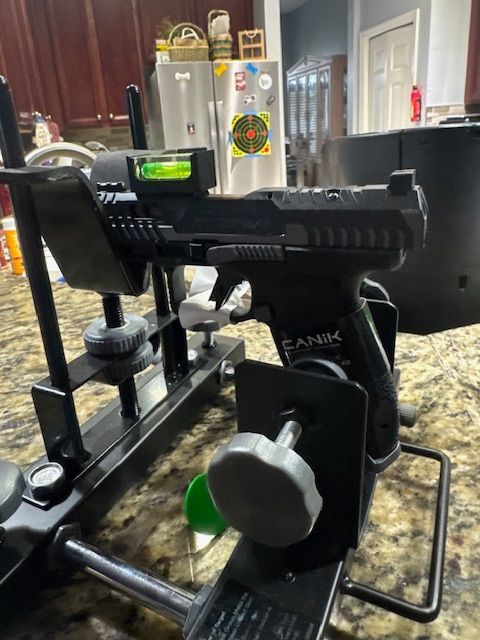
Kielma Installing and Sighting In A New Optic Why Handgun Sighting In Is Essential for Every Responsible Shooter Gregg Kielma 01/04/2026 Gunsmith Gregg Kielma recommends spending $30–$40 (Handgun) to have a professional sight in your new or current firearm. If your shots are off target, such as low and left, let a gunsmith inspect it, it's an inexpensive way to ensure top performance. Here are my thoughts, Let’s Take a LOOK. Handguns are often marketed as “ready out of the box,” but any experienced shooter knows that true accuracy doesn’t come from assumptions — it comes from verification. Sighting in a handgun is one of the most overlooked steps in responsible firearm ownership, yet it’s one of the most important. Whether you carry daily, shoot recreationally, or train for defensive proficiency, confirming your sights is a foundational part of safety, confidence, and performance. Accuracy Starts With a Known Zero Every handgun, even from the same manufacturer and model line, can shoot slightly differently. Variations in ammunition, barrel harmonics, sight height, and shooter grip all influence point of impact. Sighting in ensures: • Your rounds land exactly where your sights indicate • You understand how your chosen ammunition performs • You eliminate guesswork in a defensive situation Kielma suggests: A verified zero is the difference between “close enough” and true precision. Equipment Changes Require Confirmation Any time you adjust or replace sights — whether installing night sights, fiber optics, red dots, or suppressor height irons — you must confirm alignment on the range. Even factory installed sights can be slightly off due to manufacturing tolerances or shipping impacts. Kielma suggests: A quick sight in session ensures your equipment is working with you, not against you. Sighting In Builds Shooter Confidence Confidence is a critical component of effective shooting. When you know your handgun is properly sighted in, you remove doubt and hesitation. That confidence translates into: • Better shot placement • Faster follow up shots • Improved decision making under stress Kielma suggests: A shooter who trusts their equipment performs at a higher level. A Key Part of Defensive Readiness In a defensive encounter, accuracy matters more than anything. You are responsible for every round fired. A handgun that hasn’t been sighted in introduces unnecessary risk — to you, your loved ones, and bystanders. Kielma suggests: A confirmed zero ensures that if you ever need your firearm to protect life, it will perform exactly as expected. Understanding Your Personal Point of Aim vs. Point of Impact Every shooter has unique biomechanics: grip strength, wrist angle, trigger press, and stance. These factors influence where rounds land. Sighting in helps you understand: • How you shoot your handgun • How your natural point of aim aligns with your sights • Whether adjustments are needed to the firearm or your technique Kielma suggests: This process is invaluable for both new shooters and seasoned professionals. Consistency and Training Go Hand in Hand Sighting in isn’t a one time task. It should be revisited when: • You change ammunition • You modify your firearm • You experience unexplained accuracy shifts • You haven’t shot the firearm in a long time Kielma suggests: Regular confirmation keeps your skills sharp and your equipment reliable. Kielma’s Parting Shot: Sighting in a handgun is more than a technical step — it’s a commitment to responsibility, accuracy, and safety. For everyday carriers, competitive shooters, and new gun owners alike, taking the time to properly sight in ensures your firearm performs exactly as intended. It’s one of the simplest ways to build confidence, improve accuracy, and uphold the standards of responsible gun ownership. Gregg Kielma

Mental Health and Firearms: A Responsible “Owner’s” Guide Gregg Kielma 01/03/2026 At Tactical K Training and Firearms , if I have concerns about a buyer who passes the background check, and something doesn’t feel right, it’s my duty to immediately report it to the ATF. In the past three years, there haven't been any incidents. If the situation is serious, I will not transfer a firearm to anyone I believe is mentally unstable. While I am not judge or jury, this is my policy to keep the public safe. Kielma says, here are my thoughts on this important subject. Agree or disagree, THIS IS MY POLICY. Let’s Take a LOOK Firearm ownership carries tremendous responsibility. Alongside safe handling, secure storage, and ongoing training, mental health is an essential part of responsible gun ownership. Understanding how emotional well-being intersects with firearm access helps protect individuals, families, and communities — and it reinforces the core values of safety and preparedness that every responsible gun owner should uphold. Why Mental Health Matters in Firearm Ownership Mental health affects judgment, awareness, and decision making. Just as physical health can impact a person’s ability to safely operate a firearm, emotional or psychological stress can influence how someone responds to pressure, conflict, or fear. Being mindful of mental health is not about stigma — it’s about preparedness. Responsible owners recognize that safety includes both the physical and emotional environment surrounding a firearm. Secure Storage Protects Everyone Safe storage is one of the most effective ways to prevent unauthorized or unsafe access. This includes: • Locking firearms in a secure safe or lockbox • Using cable or trigger locks when appropriate • Storing ammunition separately • Ensuring only trained, authorized individuals have access These practices protect children, visitors, and anyone who may be experiencing emotional distress. Recognizing When to Pause Access Life brings stress — job pressure, family conflict, grief, financial strain, or health challenges. During difficult periods, even highly trained and responsible gun owners may benefit from temporarily limiting access to their firearms. This can include: • Using additional locks • Storing firearms off site with a trusted, legally permitted individual • Utilizing storage services offered by some ranges or gun shops Taking a temporary pause is not a sign of weakness. It’s a sign of maturity, responsibility, and respect for the power of a firearm. Supporting Loved Ones Firearm owners often serve as leaders in their homes and communities. Being attentive to the mental well-being of loved ones is part of that leadership. You can help by: • Encouraging open, judgment free conversations • Recognizing signs of emotional distress • Ensuring firearms are secured when someone in the home is struggling • Guiding them toward professional support when needed A supportive environment can make a meaningful difference. Training and Education Build Confid ence Ongoing training reinforces safe habits and keeps skills sharp. At Tactical K Training and Firearms, we emphasize: • Situational awareness • De escalation • Avoidance and escape • Responsible decision making under stress These principles help ensure that firearm owners are prepared not just physically, but mentally as well. Kielma's Parting Shot: A Culture of Responsibility Responsible firearm ownership is built on a foundation of safety, education, and self-awareness. By acknowledging the role mental health plays in safe firearm handling, owners strengthen their ability to protect themselves and those around them. Promoting mental well-being is not separate from firearm safety — it is part of it. Gregg Kielma These are my thoughts and my policy.






